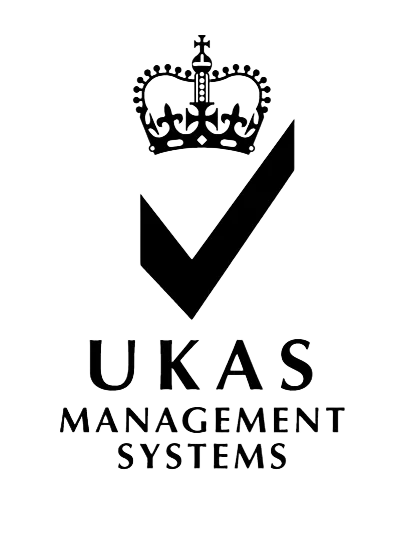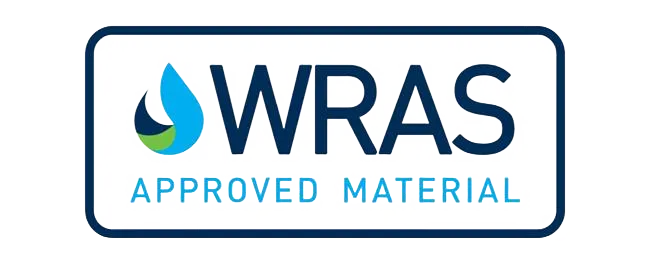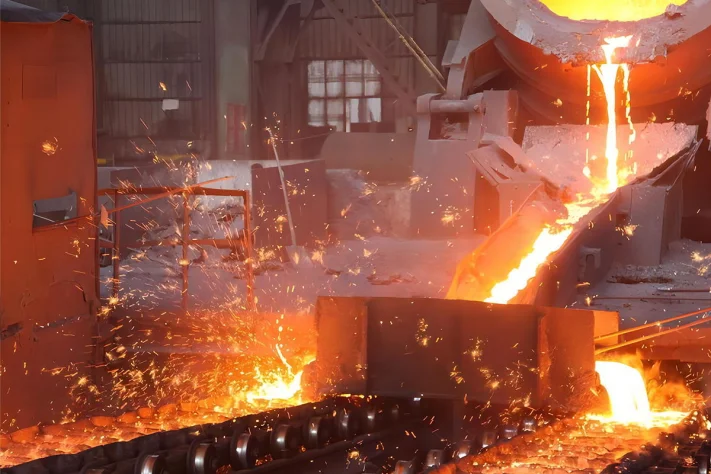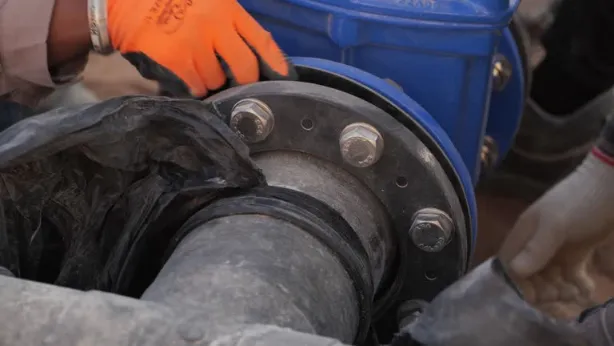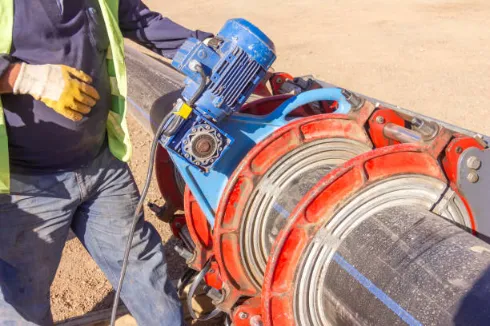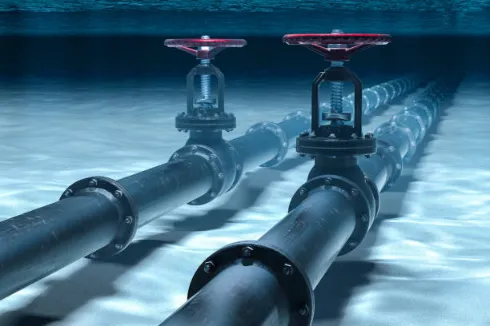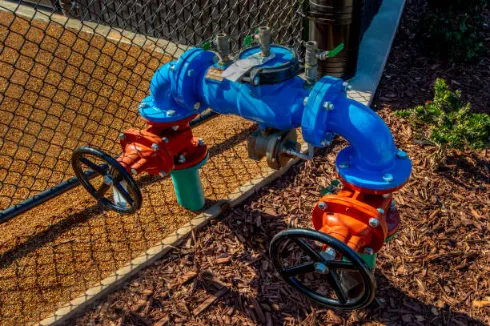Understanding Ductile Cast Iron
What Is Ductile Cast Iron?
Ductile cast iron, also called nodular iron or spheroidal graphite iron, is a special kind of cast iron. It has a unique structure inside. Unlike regular cast iron, which has flat, flake-like graphite bits, ductile cast iron has round graphite nodules. These round shapes greatly improve its strength and flexibility. This makes ductile iron material perfect for many tough jobs in industries.
The story of ductile cast iron began in the mid-1900s. Metal experts found that adding tiny amounts of magnesium or cerium to melted cast iron changed its graphite into round shapes. This discovery changed how cast iron was used in building and making things. It became stronger and more bendable.
Key Features of Ductile Iron Material
Ductile iron material has several important traits that make it different from other cast irons:
Strong and Tough: The round graphite nodules spread stress evenly. This gives ductile iron material great strength and resistance to hard hits.
Very Bendable: As its name says, ductile cast iron can bend a lot without breaking. This is great for parts that face changing forces.
Resists Rust: It’s not as rust-proof as stainless steel. Still, ductile iron material fights off rust and wear from the environment well.
Flexible Use: It can be shaped, welded, and heated to fit specific needs.
Saves Money: Compared to steel, ductile iron material costs less to make. It still offers similar strength for many uses.
How Ductile Cast Iron Is Made
Making ductile cast iron material involves a few key steps:
Melting: Pig iron and scrap steel are heated in a furnace. This creates a base liquid metal.
Adding Special Elements: Magnesium or cerium is added carefully. These change the graphite from flakes to round nodules as the metal hardens.
Pouring: The treated liquid metal is poured into molds. These molds shape the final product.
Cooling: As the metal cools, round graphite nodules form inside. This gives ductile cast iron its special traits.
Extra Steps: For some uses, the metal may be heated or polished. This boosts certain qualities.
Differences Between Ductile Cast Iron and Regular Cast Iron
Structure and Makeup Differences
The biggest difference between ductile cast iron and regular gray cast iron is their inner structure:
In gray cast iron, graphite forms as flat flakes. These flakes create weak spots. They make the material brittle.
Ductile cast iron has round graphite nodules. These reduce weak spots and improve strength.
Adding magnesium or cerium during production changes the graphite in ductile iron material. It turns flakes into spheres. This completely changes how the material handles stress.
Strength and Performance Comparison
Ductile cast iron beats regular gray cast iron in several ways:
Pulling Strength: Ductile iron material is stronger when pulled. It spreads stress better.
Stretch Before Breaking: It can stretch more before it snaps. This shows better flexibility.
Impact Resistance: The round nodules absorb energy well. This makes ductile iron material tougher against sudden hits.
Lasts Under Repeated Stress: Parts made from ductile cast iron last longer when forces keep changing. Gray cast iron wears out faster.
Benefits of Ductile Iron Material Over Regular Cast Iron
Lasts Longer: Its toughness and resistance to wear make ductile iron material great for important parts.
Design Freedom: It’s easy to shape into complex forms. This doesn’t harm its performance.
Many Uses: From car parts like crankshafts to pipes for water systems, ductile iron material works in many areas.
Saves Money: It’s stronger than gray cast iron but cheaper than steel for many jobs.
For example, companies like Conflex Joints offer custom ductile iron fittings. These are used in water supply systems worldwide. They are made to fit specific needs.
Uses of Ductile Cast Iron in Different Industries
Ductile Iron Fittings in Pipeline Systems
Ductile iron fittings are vital in pipeline systems. Their strength and flexibility make them perfect for handling changing forces and pressures. These fittings are used in water systems, sewage lines, and industrial pipelines. The ductile iron material resists rust. This ensures a long life, even in tough conditions or with harsh chemicals.
The round graphite nodules in ductile iron material spread stress evenly. This lowers the chance of cracks or breaks, even with big pressure changes. Also, ductile iron fittings can be customized. This makes them flexible for different designs and uses.
Uses in Water Supply and Drainage Systems
Ductile cast iron has changed water supply and drainage systems. It’s strong and reliable. Pipes made from ductile iron material handle high pressures. They are great for sending clean water over long distances. Their resistance to wear keeps them working well for years.
In drainage systems, ductile iron pipes manage large amounts of wastewater. They don’t break down easily. Their smooth insides reduce friction. This allows water to flow efficiently. It also saves energy during pumping. Cities and industries often choose ductile iron material for these reasons.
Role in Gas and Oil Industries
The gas and oil industries need materials that can handle extreme heat, pressure, and rust. Ductile iron material meets these needs. It has great strength and resists wear.
Parts like valves, flanges, and couplings benefit from ductile iron fittings. They stay stable even with vibrations or shocks. This is important in far-off or offshore sites where repairs are hard. Also, ductile iron material costs less than materials like stainless steel. This makes it a smart choice for big projects.
Importance in Heating and Chemical Projects
Heating systems often use ductile iron material for parts like radiators. Its ability to carry heat makes it efficient. It stays strong even with repeated heating and cooling. This prevents warping or cracking.
In chemical projects, ductile iron material resists chemical damage. It’s used in reactors, tanks, and pipes that handle harsh substances. Its ease of shaping allows for precise designs. This fits complex systems well.
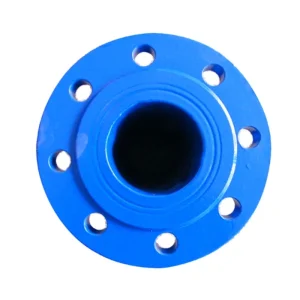
Benefits of Using Ductile Cast Iron for Industry
Strength and Long Life of Ductile Iron Material
One big feature of ductile iron material is its strength. The round graphite nodules make it tough. It can handle heavy loads without breaking. This is great for critical jobs where failure isn’t an option.
Ductile iron material also lasts a long time. Parts made from it often outlast those made from gray cast iron. Its resistance to wear and stress makes it reliable. This cuts repair costs and downtime for industries.
Saves Money with Ductile Iron Products
Even with its great features, ductile iron material is affordable. It uses cheaper raw materials than stainless steel or aluminum. Also, it’s easy to shape. This lowers production costs.
The long-term savings are big too. Its strength reduces the need for frequent fixes or replacements. This makes ductile iron material a smart choice for big projects like water systems or industrial setups.
Easy to Install Ductile Iron Fittings
Ductile iron fittings are made for easy setup. They work with many joining methods, like push-fit joints or mechanical couplings. This makes assembly simple on-site. It cuts labor needs and speeds up projects.
Also, ductile iron material is lighter than regular steel. This makes it easier to handle during setup. It doesn’t lose strength or performance. For example, Conflex Joints offers custom ductile iron fittings. These are designed for quick installation for engineering companies worldwide.
Frequently Asked Questions (FAQs)
What makes ductile cast iron different from regular gray cast iron?
The main difference is their structure. Ductile cast iron has round graphite nodules. These boost strength and toughness. Gray cast iron has flat graphite flakes.
Why is flexibility important in pipeline systems?
Flexibility lets ductile iron material bend under stress without breaking. This is key for handling changing forces and pressures in pipelines.
What are the benefits of ductile iron fittings?
They are strong, resist rust, and are easy to install. They also save money and stay reliable for many industrial uses.
Can ductile cast iron handle tough conditions?
Yes, its resistance to rust and wear makes it great for harsh places like chemical plants or offshore sites.
Readers curious about advanced solutions like Conflex Joints can learn more. This expert maker provides high-quality ductile iron fittings. Their products are designed for global markets. They offer fast service for engineering companies worldwide.


